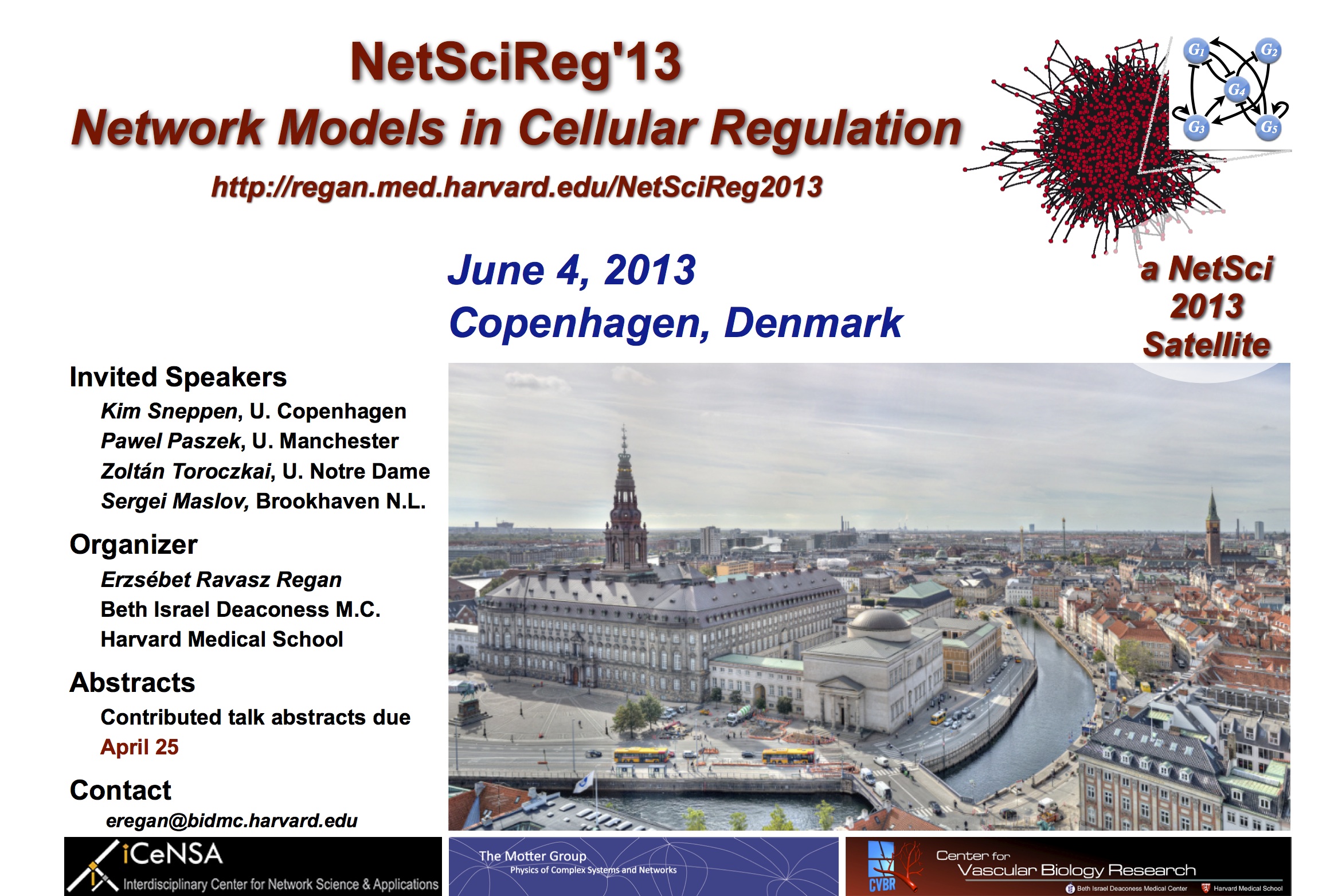NetSciReg'13 - Network Models in Cellular Regulation
June 4, 2013 - Copenhagen
| Synopsis |
| Program |
| NetSciReg'13 Flyer |
| Important Dates |
| Registration |
| Call for Contributed Talks |
| Logistics |
| NetSci 2013 |
| Sponsors |
|
Dynamical Modularity of Mammalian Cell Proliferation
Erzsébet Ravasz Regan
Time: 2:30 AM - 2:50 PM
Type: Contributed talk
Affiliation: Center for Vascular Biology Research
Abstract: Our control over complex diseases could be transformed by multi-scale dynamical models of system-wide cellular regulatory networks. Building multi-scale dynamical models requires distilling the essential properties of lower scales and using them in models at the next level. The basic principles of transitioning from the scale of molecular interactions up to small regulatory motifs are largely understood. Beyond this scale, however, the principles of coarse-graining sub-graphs within large regulatory networks are not established. A top-down view of cellular regulation indicates that such coarse-graining should be possible. Both the wiring structure of biological networks and system-level gene expression patterns (cellular phenotypes) point to a hierarchical, modular organization. Nevertheless, we currently lack the methods to build modular network models that couple the dynamics on subgraphs and subgraph combinations to cellular phenotypes and phenotype combinations. Here we ask: are there general, basic principles in cellular regulation that can guide our efforts to build coarse-grained models of interconnected regulatory modules? We propose that cellular regulatory networks are organized into semi-independent modules that each robustly realize several functional states. These dynamical modules are linked to coordinate their respective phenotypes. They organize into a higher-level multi-stable dynamical system that may be modeled by a coarse-grained discrete dynamical model. We show the principle at work in control of mammalian proliferation, and define quantitative measures of dynamical modularity. This modeling effort is expected to uncover the theoretical underpinnings of multi-scale regulatory network modeling. Experimental validation of its central hypothesis would provide novel insight into what may set apart matter that can sustain life. Existence of dynamically independent modules within the regulatory system implies that cells can exploit a large variety of functional choices, tailored together from robust phenotype combinations. Proven successful, the proposed modeling framework can be extended beyond single cells, to tissues and organs. |
SPONSORS: |



